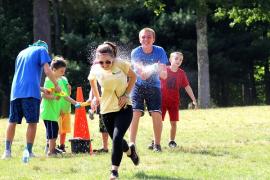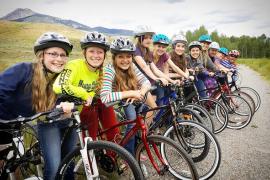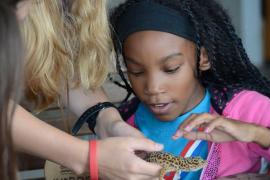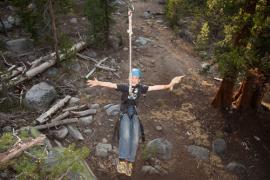Social emotional learning. It’s the good stuff we know kids get out of camp: responsibility, interest in exploration, teamwork skills, independence. We also know that 93 percent of camps today intentionally target skills related to social-emotional learning in their staff training and program planning.
Social emotional learning, SEL for short, is the it phrase in education, because research has shown that it is the key to health and thriving in school and beyond, which is why big-name funders love SEL too. It’s the one thing we need to eliminate the opportunity gap that exists between kids who are privileged and those from marginalized communities.
And the best part? Whether you know it or not, you — the people working directly with kids at camp — are in the business of social learning every single day.
So let’s talk about some ways to capture your SEL work and share it with parents, funders, even, if you are a seasonal staff person, to your future employers. For those of you approaching the end of the summer season, it might be tempting to put this off until next year. But don’t!
SEL is in full swing right now at your camp, so why not capture it in some way? Whether you gather data or start the process of developing an evaluation plan, now is the time to take one step towards celebrating your program as an ideal way for youth to practice social emotional learning.
Here are some ideas:
- Use ACA’s Youth Outcomes Battery. Use the responsibility or teamwork surveys and ask campers to fill it out during rest hour. Don’t worry about giving it to every single camper, choose just one age group or session.
- Ask staff to rate campers’ social emotional skills (check out the Youth Outcomes Battery Staff Perceptions Tool, or this report has a good example that can be adapted for use at camp). Don’t get too hung up on perfect answers — the real data here are what you learn from staff about the process of observing campers’ SEL. Write down what you learn, and plan to implement it again next year.
- Play a problem-solving game, like something from this list. Ask kids to write on a half sheet of paper one way they used problem solving to find a solution. Collect papers and look for themes.
- Show a movie clip and then facilitate discussion about what the clip had to do with social emotional learning. Role-playing, drawing, and journaling are all creative ways you can collect data about what they learned.
- Create a kid-friendly version of this wheel, then print out copies and hang them in cabins. Have staff ask campers to identify one skill they felt great about that day and record it.
- Ask staff to reflect on their social emotional practices using this tool. Use data as baseline for improvement in future seasons.
- Walk around with a clipboard and make notes of times and places where you think social emotional learning is happening at camp. Then, use this guide to make a plan for assessing SEL based on what you observed.
Want to learn more?
- CASEL (Collaborative for Academic, Social, and Emotional Learning): What is SEL?
- Wallace Foundation’s Social and Emotional Learning from the Inside Out: Looking Inside and Across 25 Leading Programs
- Social-Emotional Learning Measures for Middle School Youth (CASEL)
The end of summer is a busy, busy time, but also a great time to grab some kind of data while you still can. SEL is going on all around you, so even a small amount of data can help you better understand how your campers are learning and what you can do to increase SEL down the road.
In our next post, we will share a fun way to tackle this and other data you gather this summer. In the meantime, keep up your great SEL work!
Laurie Browne, PhD, is the director of research at ACA. She specializes in ACA's Youth Outcomes Battery and supporting camps in their research and evaluation efforts. Prior to joining ACA, Laurie was an assistant professor in the Department of Recreation, Hospitality, and Parks Management at California State University-Chico. Laurie received her Ph.D. from the University of Utah, where she studied youth development and research methods.
Photo courtesy of Girl Scouts of Limberlost Council in Fort Wayne, IN
Thanks to our research partner, Redwoods.
Additional thanks goes to our research supporter, Chaco.
The views and opinions expressed by contributors are their own and do not necessarily reflect the views of the American Camp Association or ACA employees.





